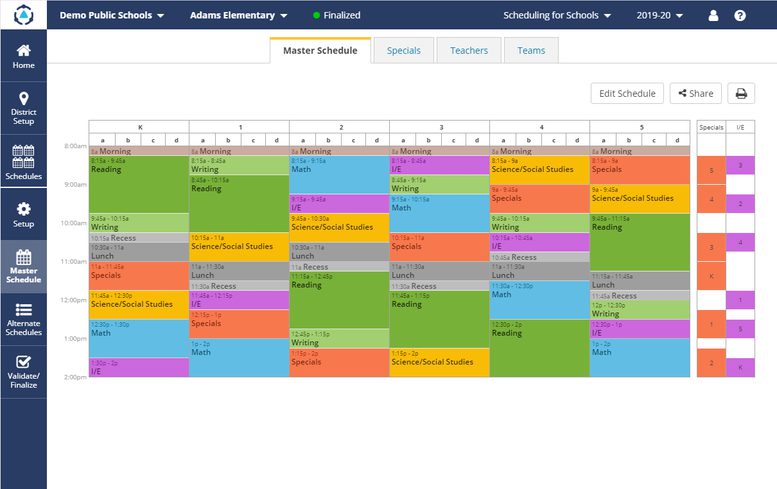This 12-part How to Build an Elementary School Schedule series shares expert step-by-step guidance and proven scheduling strategies to help you create better schedules this year.
When preparing to build your elementary school schedule, after establishing goals and instructional minute guidelines, the next step is to clearly identify the constraints you will face as you build your master schedule.
Make sure to separate constraints from preferences and unchallenged historical practice. Constraints are factors you have very little control over when scheduling. Personal, staff, and historical preferences and practices can be assessed later in the scheduling process.
Having a checklist of constraints will be helpful throughout the scheduling process. The following are examples of constraints to consider. Please keep in mind that no two schools are the same and therefore may have different constraints.
- What are the requirements of your teacher contract?
Will homeroom teachers have planning time during specials periods?
Do specials teachers have sufficient planning time?
Will homeroom teachers have their lunch when students eat?
- Do you have multipurpose spaces?
- What shared resources will come into play?
- Are some teachers part-time or shared with other schools?
- Where is recess on days with inclement weather?
Teacher contracts often dictate how much lunch and/or planning time teachers should have. Begin by making sure you clearly understand the current terms of these contracts. Do not depend on anecdotal information as this could be inaccurate and/or misaligned with current contractual obligations. Secondly, consider how you will accommodate these requirements in the schedule. For example:
For example, is your cafeteria also used as a gym? If so, you will need to ensure that PE is never scheduled during breakfast or lunch periods. You also need to consider the transition times for the breakfast/lunch room set up, clean up, and tear down. This will allow for proper buffer time between breakfast and PE, morning PE and lunch, and lunch and afternoon PE. Do you have other subjects that share spaces (e.g. Music and Band, Library and Technology, other)?
What is the maximum number of students that can be in the cafeteria at the same time? How many recess spaces do you have? Is there a maximum number of students that can be at recess at the same time? Are some materials provided on a cart or shared across classrooms (e.g. Chromebooks)?
It is becoming more common for schools to share specials teachers with another school and/or hire part-time staff. Do you have a specials teacher at your school on certain days or only available for a certain number of hours weekly? Do you have a band, orchestra, chorus or other teacher shared with a secondary school? Is the school with which you share on the same schedule rotation as your school?
Do students stay in their classrooms? Do they use the gym? If they use the gym, you’ll have to make sure recess is never scheduled concurrently with PE.
Clearly identifying your schedule constraints before you begin building your elementary schedule will help guide your process.

About DMSchedules
Create Better School and Staff Schedules Now with DMGroup’s DMSchedules Scheduling Software
Learn moreElementary Scheduling Software

